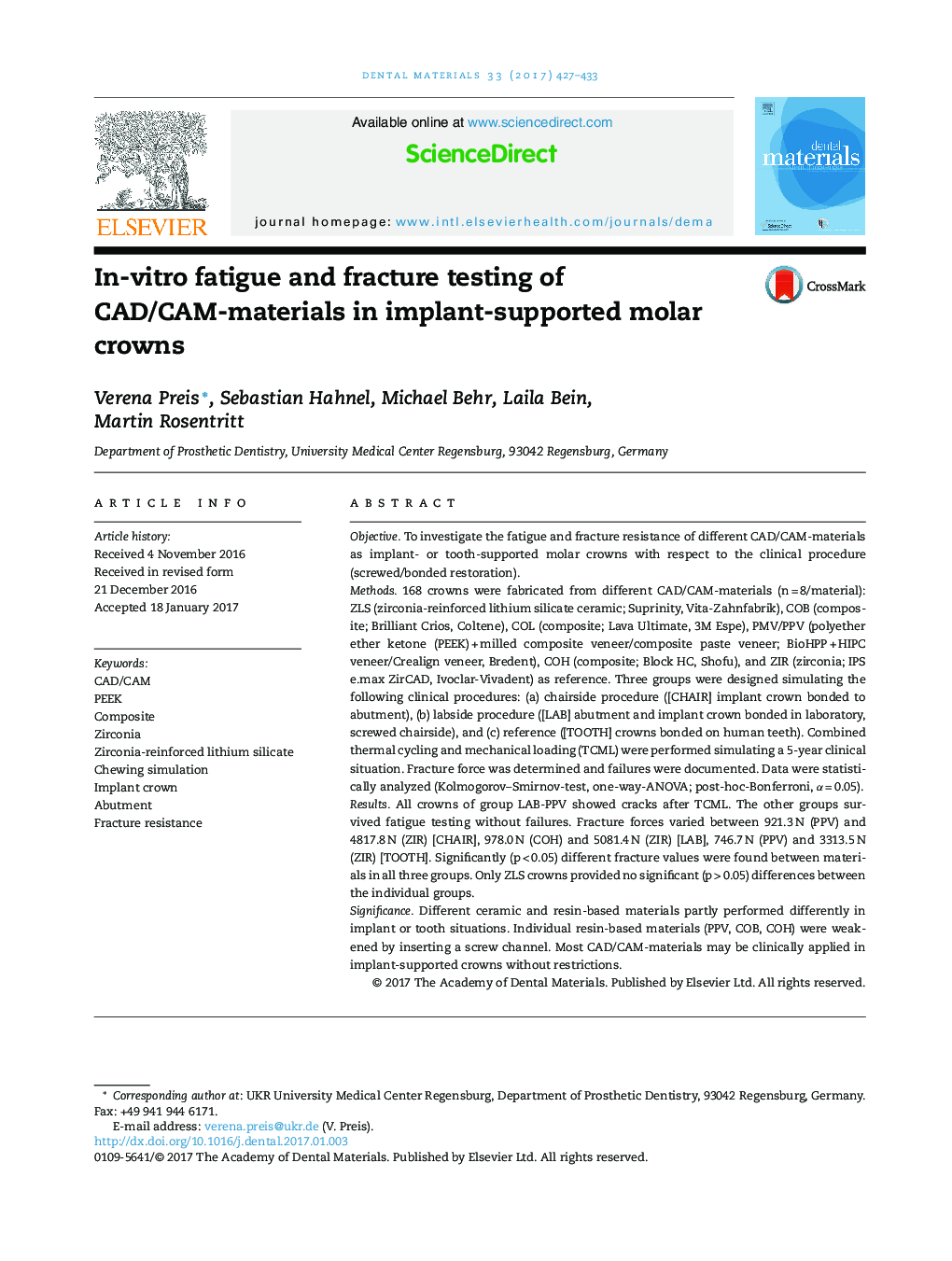| کد مقاله | کد نشریه | سال انتشار | مقاله انگلیسی | نسخه تمام متن |
|---|---|---|---|---|
| 5432898 | 1398046 | 2017 | 7 صفحه PDF | دانلود رایگان |

ObjectiveTo investigate the fatigue and fracture resistance of different CAD/CAM-materials as implant- or tooth-supported molar crowns with respect to the clinical procedure (screwed/bonded restoration).Methods168 crowns were fabricated from different CAD/CAM-materials (n = 8/material): ZLS (zirconia-reinforced lithium silicate ceramic; Suprinity, Vita-Zahnfabrik), COB (composite; Brilliant Crios, Coltene), COL (composite; Lava Ultimate, 3M Espe), PMV/PPV (polyether ether ketone (PEEK) + milled composite veneer/composite paste veneer; BioHPP + HIPC veneer/Crealign veneer, Bredent), COH (composite; Block HC, Shofu), and ZIR (zirconia; IPS e.max ZirCAD, Ivoclar-Vivadent) as reference. Three groups were designed simulating the following clinical procedures: (a) chairside procedure ([CHAIR] implant crown bonded to abutment), (b) labside procedure ([LAB] abutment and implant crown bonded in laboratory, screwed chairside), and (c) reference ([TOOTH] crowns bonded on human teeth). Combined thermal cycling and mechanical loading (TCML) were performed simulating a 5-year clinical situation. Fracture force was determined and failures were documented. Data were statistically analyzed (Kolmogorov-Smirnov-test, one-way-ANOVA; post-hoc-Bonferroni, α = 0.05).ResultsAll crowns of group LAB-PPV showed cracks after TCML. The other groups survived fatigue testing without failures. Fracture forces varied between 921.3 N (PPV) and 4817.8 N (ZIR) [CHAIR], 978.0 N (COH) and 5081.4 N (ZIR) [LAB], 746.7 N (PPV) and 3313.5 N (ZIR) [TOOTH]. Significantly (p < 0.05) different fracture values were found between materials in all three groups. Only ZLS crowns provided no significant (p > 0.05) differences between the individual groups.SignificanceDifferent ceramic and resin-based materials partly performed differently in implant or tooth situations. Individual resin-based materials (PPV, COB, COH) were weakened by inserting a screw channel. Most CAD/CAM-materials may be clinically applied in implant-supported crowns without restrictions. â
Journal: Dental Materials - Volume 33, Issue 4, April 2017, Pages 427-433